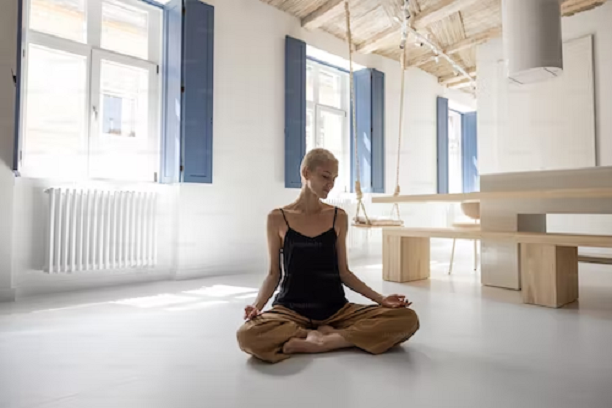Yoga is an ancient practice that has become increasingly popular in modern times. Its physical and mental benefits make it a great exercise for people of all ages and fitness levels. However, if you’re new to yoga, it can be overwhelming to know where to start. With so many different styles, poses, and techniques, it’s easy to feel lost. That’s why it’s crucial to seek out helpful advice. Whether you want to improve your flexibility, reduce stress, or try something new, these tips will help you get the most out of your yoga practice.
1. Start Slow
As a beginner, it’s essential to ease into your yoga practice. Try to do a little before that; instead, take your time to learn the basics. Starting with a beginner’s class is highly recommended. Not only does it introduce the essentials of yoga in a safe, unintimidating way, but you’ll also receive individual attention and assistance to help get you off on the right foot.
While it may seem tempting to jump right into more advanced poses or classes to push yourself further, it is best to take your time. Progress naturally follows with patience and appropriate instruction – that’s how long-term success can be achieved.
2. Develop Your Understanding
Yoga is more than just physical postures – it’s also about understanding how your body works and learning how to use your practice as a tool for self-exploration. Familiarize yourself with the fundamental principles of yoga, such as breath awareness and proper alignment, and explore the various aspects of yogic philosophy that can help inform your practice.
Books, podcasts, online classes, and workshops are great resources to expand your knowledge. Research websites for more information about yoga training and certifications to deepen your practice. The more you learn, the better chance you have of achieving a long-term yoga practice that is both safe and enjoyable. With time, patience, and dedication, there’s no limit to how far yoga can take you.
3. Find a Good Teacher
When you’re looking for an excellent local yoga teacher, start by asking friends and acquaintances who they have learned from in the past. A teacher with good standing in the community is generally a great sign of their quality. Additionally, you can review listings online to get a sense of potential teachers’ backgrounds–look for teachers who have completed specialized courses and training.
Finally, when you meet your chosen teacher, trust your gut. No one knows better than you what type of instruction best suits your needs. Suppose something needs to be fixed with you regarding how the teacher conveys information or navigates group dynamics. In that case, it might be best to continue searching for someone better suited to your interests.
4. Listen to Your Body
It’s essential to listen to your body and be mindful of what it tells you during your yoga practice. Whether it’s tight hamstrings, a weak back, or fatigue that creeps in sooner than you’d like, honor those signals and modify your practice accordingly. It can be tempting to ignore aches and pains in the name of pushing yourself, but making small tweaks can often be a more beneficial approach.
Stretch gently in poses instead of maximum depth; slow your breath if you feel too out of breath. Spend extra time building strength on a pose if needed, and permit yourself to take many breaks. Paying close attention to your feelings will help keep your practice safe and effective.
5. Practice Regularly
Find a yoga practice that works for you and commit to it. While there’s no hard-and-fast rule on how often is best, most instructors recommend practicing three times per week to see the long-term benefits of your practice.
Try to make time for some extra stretching or meditation throughout the week. Consider practicing yoga at home on days when you can’t make it to class, or find a studio that offers a variety of classes and styles so that you can explore different types of yoga.
6. Use Props
Props are an invaluable tool in any yoga practice. Whether it’s a block to help you reach the floor or a strap to increase flexibility, props can often provide the support and stability your body needs to perform each asana (pose) safely.
Be bold and use props – having some extra assistance during your practice can often be helpful, and it can also give you the confidence to go deeper in poses than you may otherwise be able to. And if you don’t have access to a prop while practicing at home, feel free to improvise – a rolled-up towel or blanket can do the trick.
Yoga is a wonderful way to get in touch with your body and develop an appreciation for the practice of self-care. With proper instruction, dedication, and understanding, you can cultivate a regular yoga practice that brings joy, balance, and stability into your day-to-day life. So take your time, listen to your body, and enjoy the journey.
